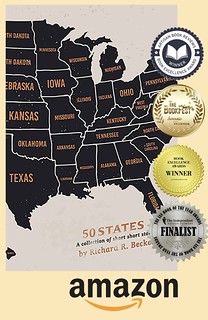“The care of human life and happiness, and not their destruction, is the first and only object of good government.” — Thomas Jefferson
About a year ago, Antony Berkman, president of BlogCatalog.com, had an idea. He noted the media attention other social networks received were often based on raising investment capital.
He decided to do something else. He wanted to raise social capital instead.
“We had yet to see an online social community come together to raise funds for a good cause,” said Berkman. “So we saw it as an opportunity to empower and recognize bloggers who collectively focus their blogs for good.”
While Berkman says he wasn’t sure the first campaign would succeed — one that raised funds that directly benefited more than 1,000 students across the United States — he is happy to find Bloggers Unite has come full circle. One year and four campaigns later, BlogCatalog members hopes to inspire again.
This time, on May 15, bloggers are being asked to tackle a topic selected by members — Bloggers Unite For Human Rights. Although no one knew it a few months ago, the timing for a human rights social awareness campaign couldn’t be better. This year is the 60th anniversary of the Universal Declaration of Human Rights.
For most of us, human rights — life, liberty, justice, and freedom of expression — seem so commonplace that they are taken for granted. Yet, all over the world and sometimes just out of sight in our own backyards, human rights are tread with utter disregard. This is a great opportunity to speak out for those who cannot.
In Durfar, Sudan, women and children are raped and brutally attacked by government forces and militia. In South America, human trafficking continues to be increasing concern. In Zimbabwe, journalists are being arrested. And all over the world, censorship, from the Internet to everything, is becoming the rule and not the exception.
What can you do about it? Bloggers Unite For Human Rights.
Dedicate a post on any issue related to Human Rights this May 15 and encourage others to do the same. You can find several badges to display on your blog or submit new badges to Bloggers Unite.
Copywrite, Ink. will be recognizing several top bloggers who join the campaign and list their posts on the Bloggers Unite Discussion Group on May 15. Please give it some thought and consider how ten, one hundred, ten thousand, or tens of thousands can make a difference.

About a year ago, Antony Berkman, president of BlogCatalog.com, had an idea. He noted the media attention other social networks received were often based on raising investment capital.
He decided to do something else. He wanted to raise social capital instead.
“We had yet to see an online social community come together to raise funds for a good cause,” said Berkman. “So we saw it as an opportunity to empower and recognize bloggers who collectively focus their blogs for good.”
While Berkman says he wasn’t sure the first campaign would succeed — one that raised funds that directly benefited more than 1,000 students across the United States — he is happy to find Bloggers Unite has come full circle. One year and four campaigns later, BlogCatalog members hopes to inspire again.
This time, on May 15, bloggers are being asked to tackle a topic selected by members — Bloggers Unite For Human Rights. Although no one knew it a few months ago, the timing for a human rights social awareness campaign couldn’t be better. This year is the 60th anniversary of the Universal Declaration of Human Rights.
For most of us, human rights — life, liberty, justice, and freedom of expression — seem so commonplace that they are taken for granted. Yet, all over the world and sometimes just out of sight in our own backyards, human rights are tread with utter disregard. This is a great opportunity to speak out for those who cannot.
In Durfar, Sudan, women and children are raped and brutally attacked by government forces and militia. In South America, human trafficking continues to be increasing concern. In Zimbabwe, journalists are being arrested. And all over the world, censorship, from the Internet to everything, is becoming the rule and not the exception.
What can you do about it? Bloggers Unite For Human Rights.
Dedicate a post on any issue related to Human Rights this May 15 and encourage others to do the same. You can find several badges to display on your blog or submit new badges to Bloggers Unite.
Copywrite, Ink. will be recognizing several top bloggers who join the campaign and list their posts on the Bloggers Unite Discussion Group on May 15. Please give it some thought and consider how ten, one hundred, ten thousand, or tens of thousands can make a difference.























